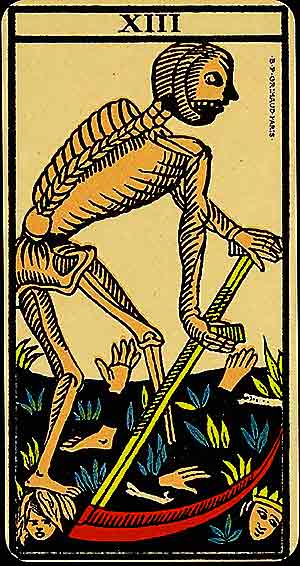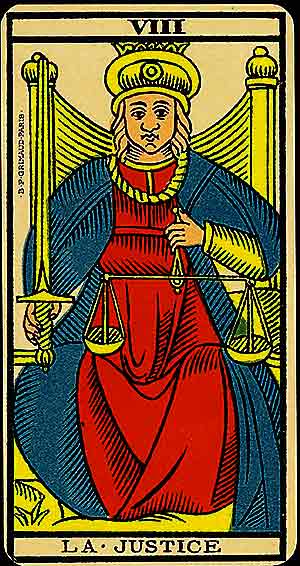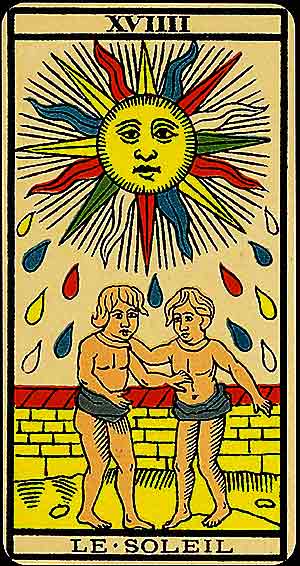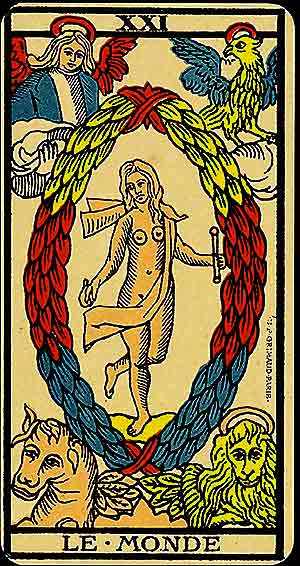Relationship Spread #1

Difficulty: Easy
This tarot spread is easy to read, like a convenient chart. In this spread, court cards generally indicate actual people with the same characteristics. Knights (or corresponding princes, but not kings) and queens are meant to represent actual men and women in this tarot spread. Look for patterns in the cards as always.
Card #1 is the overall significator of the relationship. The two columns on either side of the significator characterise each individual's role in the relationship. The relationship does not have to be romantic. In fact, it could be a relationship between a person and a group, or even how two groups relate.
The top row, cards #7 & #2, is about the conscious thoughts of each person, or what they think about the relationship and likewise how they view their partner.
The middle row, cards #6 & #3, reveals the way each individual feels about the other. Emotional awareness corresponds to a person's unconscious thoughts that run deep, affecting a person in ways he or she is not fully aware of.
The bottom row, cards #5 & #4, represents the way each person behaves, in other words the stance taken regarding the relationship. The way a person acts may be genuine, but sometimes people are phony and manipulative, so it is best to weigh this card against the other person's cards to determine how they match up.
Your Relationship #1 Reading
You |
Other Person |
||
Thought |
 XIII – Death (La Mort) |
 XI – Strength (La Force) |
|
Emotion |
 VIII – Justice |
The Significator  VI – The Lovers (L'Amoureux) |
 XVIIII – The Sun (Le Soleil) |
External Stance |
 X – The Wheel of Fortune (La Roue de Fortune) |
 XXI – The World (Le Monde) |

The Significator
VI – The Lovers (L'Amoureux)
The Lovers signifies choice, connection, and the interplay between opposing forces. It represents the power of free will in aligning with one's deepest values and desires.
Symbolism: A central figure stands between two others, often interpreted as a choice between duty and desire or contrasting influences. Above, Cupid aims an arrow, symbolising divine inspiration or the fateful pull of love. The figures' expressions suggest conflict and harmony, reflecting the complexity of relationships.
In Relationships: Profound connections, romantic choices, or a pivotal decision within a partnership. It highlights emotional and spiritual harmony.
In Work: A crossroads where important decisions must align with personal values. Collaboration or partnerships may play a key role.
Spiritually: The Lovers calls for integrating dualities—earthly and divine, passion and reason—on the path to wholeness.
When ill-dignified: Indecision, temptation, or imbalance. It warns of superficial attractions or ignoring inner truth in key decisions.

The Querent's Thoughts
XIII – Death (La Mort)
Death signifies transformation, endings, and renewal. While often feared, this card speaks to the cyclical nature of life and the necessity of clearing away the old to make way for the new.
Symbolism: A skeletal figure wields a scythe, cutting through the remnants of the past—hands, heads, and plants alike. The barren ground reflects the stripping away of what no longer serves, while the sprouting flowers hint at rebirth and growth emerging from decay.
In Relationships: The end of a relationship or a transformative phase within one. It signals profound changes, often for the better.
In Work: A major shift, such as the end of a job or the restructuring of goals. It's a call to embrace new opportunities.
Spiritually: Death teaches the power of release and the necessity of embracing life's cycles to achieve transformation.
When ill-dignified: Fear of change, stagnation, or clinging to the past. It warns against resisting the natural process of renewal.

The Other Person's Thoughts
XI – Strength (La Force)
Strength symbolises the mastery of inner strength, courage, and the harmonisation of primal instincts with spiritual awareness. It teaches that true power lies in patience and understanding rather than brute force.
Symbolism: A figure calmly opens the jaws of a lion, symbolising the mental strength required to tame one's baser instincts. The figure's composed expression reflects confidence and inner control. The lion embodies raw energy and passion, while the gentle interaction suggests a balance between wildness and refinement.
In Relationships: Emotional resilience and understanding strengthen relationships. It may indicate a need for patience and compassion in matters of the heart.
In Work: Triumph through determination and calm perseverance. Success comes from maintaining focus and self-discipline.
Spiritually: Strength reflects the integration of instinct and higher consciousness, inviting you to connect with your inner power.
When ill-dignified: Impulsiveness, weakness, or unchecked aggression. It warns against letting fear or uncontrolled passions take the lead.

The Querent's Emotions
VIII – Justice
Justice signifies truth, balance, and the law of cause and effect. She represents the impartial hand of the universe, delivering outcomes that align with one's actions and intentions.
Symbolism: Seated on a throne, Justice holds scales in one hand and a sword in the other. The scales symbolise balance and fairness, while the sword represents the clarity and decisiveness required to enact justice. Her direct gaze emphasises accountability and integrity.
In Relationships: Honest communication and equitable partnerships. It calls for evaluating the fairness and balance within relationships.
In Work: Decisions made with integrity will lead to just rewards. It is a time to act ethically and weigh all options carefully.
Spiritually: Justice reflects the law of karma and encourages alignment with higher principles to achieve spiritual clarity.
When ill-dignified: Corruption, dishonesty, or imbalance. It warns against biased decisions or failure to take responsibility for your actions.

The Other Person's Emotions
XVIIII – The Sun (Le Soleil)
The Sun represents joy, success, and clarity. It is the card of illumination and vitality, promising growth, harmony, and the fulfilment of goals through clarity and connection.
Symbolism: Two children stand joyfully under the radiant Sun, surrounded by a protective wall. The Sun itself symbolises divine energy and enlightenment, while the figures reflect innocence, unity, and shared happiness. The vibrant rays evoke abundance and the thriving life force.
In Relationships: Mutual happiness, harmony, and a joyful connection. Relationships flourish under the light of clarity and love.
In Work: Success and recognition achieved through positivity and effort. It suggests a time of clarity and accomplishment.
Spiritually: The Sun calls for embracing the light within and aligning with your true purpose, radiating joy and love outward.
When ill-dignified: Arrogance, burnout, or overexposure. It warns against taking blessings for granted or letting ego overshadow gratitude.

The Querent's External Stance
X – The Wheel of Fortune (La Roue de Fortune)
The Wheel of Fortune symbolises the ever-turning cycles of life, fate, and destiny. It teaches the importance of adaptability and trust in the rhythms of change.
Symbolism: The wheel is adorned with figures ascending and descending, representing the rise and fall of fortunes. Its circular motion evokes the cyclical nature of existence, while divine forces implied by the card's design suggest that some aspects of life are beyond human control.
In Relationships: Changes in relationship dynamics or the appearance of new opportunities. Trust in the flow of events.
In Work: A shift in circumstances, often bringing unexpected opportunities. Stay flexible and open to change.
Spiritually: The Wheel of Fortune reflects the interconnectedness of life's cycles, encouraging surrender to the divine plan.
When ill-dignified: Resistance to change or clinging to outdated patterns. It warns of losing perspective during times of transition.

The Other Person's External Stance
XXI – The World (Le Monde)
The World is the culmination of the journey, representing fulfilment, harmony, and unity. It signifies the integration of all aspects of life and the successful completion of a cycle, opening the way to new beginnings.
Symbolism: A central figure dances within a laurel wreath, symbolising victory and wholeness. The four corners often depict symbolic creatures (the lion, ox, eagle, and man), representing the elements, the fixed signs of the zodiac, or the four faces of a cherubim. The wreath signifies completion and eternity.
In Relationships: A harmonious, complete relationship or fulfilment of long-term goals in love. It reflects unity and shared purpose.
In Work: The successful culmination of a project or phase. Recognition and achievement mark this time of completion.
Spiritually: Le Monde invites the seeker to embrace the interconnectedness of all things, celebrating unity with the divine and readiness for new journeys.
When ill-dignified: Incompletion, stagnation, or feeling unfulfilled despite external success. It warns against losing sight of the bigger picture or resisting closure.